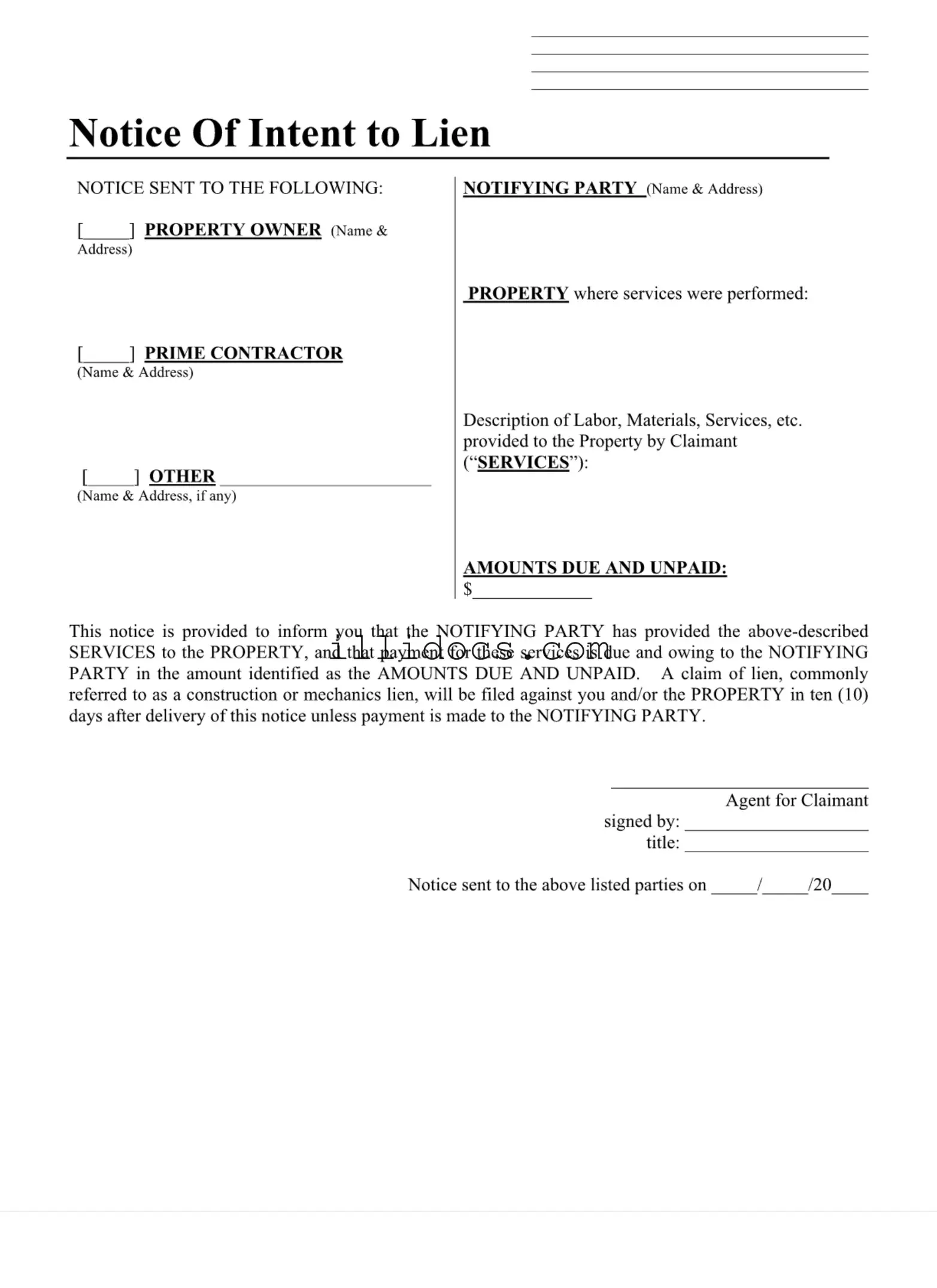What is the purpose of the Illinois Notice Lien form?
The Illinois Notice Lien form serves as a formal notification to property owners and relevant parties that a contractor or subcontractor has provided services, labor, or materials to a property and has not received payment. This notice is a critical step in the process of securing a mechanics lien, which can be filed if payment is not made within a specified timeframe. By sending this notice, the notifying party ensures that all involved parties are aware of the outstanding payment and the potential for a lien to be placed on the property if the issue is not resolved.
Who should receive the Notice Lien?
The Notice Lien should be sent to several key parties. This includes the property owner, the prime contractor, and any other relevant parties who have an interest in the property. By notifying these individuals, the notifying party ensures that everyone involved is aware of the claim and the necessity for payment. This transparency helps to facilitate communication and may encourage prompt payment to avoid further legal action.
What happens if payment is not made after the Notice Lien is sent?
If payment is not made within ten days after the Notice Lien is delivered, the notifying party has the right to file a mechanics lien against the property. This lien serves as a legal claim against the property for the unpaid amount. It can complicate future transactions involving the property, as it may prevent the owner from selling or refinancing until the lien is resolved. Therefore, it is in the best interest of all parties to address the outstanding payment promptly to avoid further legal complications.
What information is required on the Notice Lien form?
The Notice Lien form requires several key pieces of information. This includes the names and addresses of the property owner, the prime contractor, and the notifying party. Additionally, a description of the services provided, the amount due, and the details of the contract must be included. This information ensures clarity regarding the claim and provides a clear record of the services rendered and the payment that is owed.
